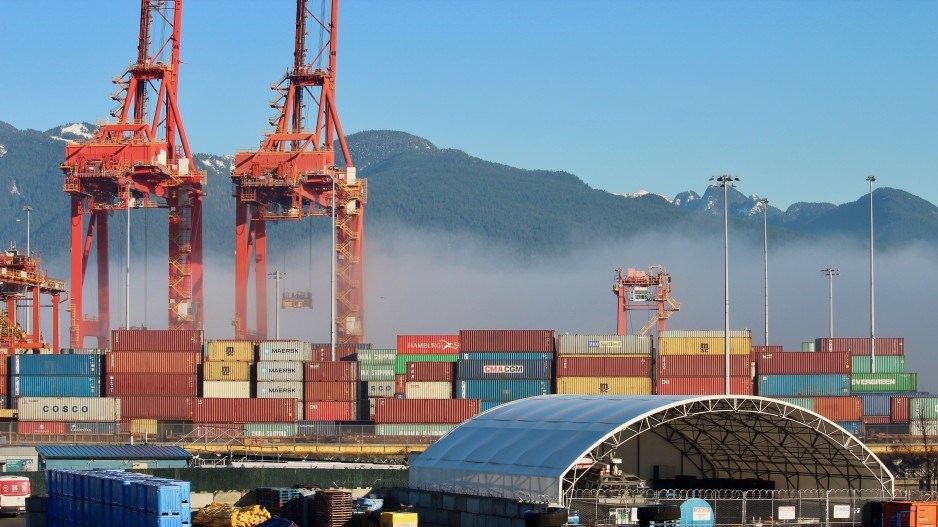Led by Halifax, Vancouver and Prince Rupert, containerized cargo handled by Canadian ports grew faster than it did among their U.S. counterparts in 2017, according to data compiled by the Journal of Commerce.
The U.S.-based global trade publication noted that Canadian and Mexican ports led the top 25 North American ports in import cargo growth. Canada’s biggest container ports collectively increased inbound cargo 14% to 3.2 million 20-foot equivalent units (TEUs) in 2017 compared with 2016.
Mexican ports recorded a collective import increase of 9.7% to 2.6 million TEUs, while American import volume was up 7.4% to 21.7 million TEUs.
The Canadian increase, according to JoC numbers, was led by Halifax’s 49.8% spike to 279,602 TEUs. Containerized imports were up 19.9% at Prince Rupert, 11.4% in Vancouver and 5.8% at Montreal.
Halifax also recorded the largest increase in exports among the top 25 North American ports: 39.5%.
Mexican ports posted North America’s highest overall growth in containerized cargo exports [10.6%]. That compares with a 5.5% increase through U.S. ports and 5% through Canadian ports, according to JoC numbers.
As Business in Vancouver has noted previously, key competition for Vancouver and other West Coast North American ports is increasingly coming from their Gulf Coast rivals.
JoC notes that New Orleans, Houston, Mobile and other Gulf Coast ports were the main drivers in U.S. import and export growth in 2017.
While Canadian ports led growth in containerized cargo imports, JoC numbers note that they still account for just 11.1% of the continent’s inbound container trade compared with 75.8% for U.S. ports.
Canadian ports’ share of North American exports is 13.7% compared with America’s 75.8% share.
The rise in cargo handling numbers at Canadian ports follows the release earlier this year of Alphaliner’s top 110 container port rankings. The list compiled by the global shipping data company ranks the Port of Vancouver at No. 45 in 2017, up from No. 48 in 2016. Vancouver is the only Canadian port in the list’s top 50.
The container cargo outlook for 2018 and beyond, meanwhile, remains mixed.
In a May 2 webinar discussing its latest outlook for container shipping and freight rate trends, Drewry, a U.K.-based shipping consultancy, painted a picture of cautious optimism.
However, Simon Heaney, Drewry’s Senior Manager of Container Research, said the container shipping industry is unlikely to see the strong demand growth rates of around 8% recorded in early 2017.
He noted that growth has been slowing since then, “but the good news is that while port handling growth may have peaked, we still expect more than adequate volumes for at least the next two years.”
Drewry has consequently upgraded its 2018 growth forecast for containerized cargo trade to 4.5% from the 4.3% it reported in January.
The biggest risk to growth on major shipping routes, Heaney said, is the trade war brewing between China and the United States.
He estimated that around 2.3% of total global container trade, about five million TEUs, could be exposed to higher tariffs resulting from the trade war.
Freight rates on the transpacific and other major trade routes remain volatile and continue to be affected by capacity oversupply among major container freight carriers.
An estimated 1.4 million TEUs will be added to the 20-million-TEU global container fleet this year.
However, Heaney said the rise in capacity from the addition of new ships will be less than previously estimated: between 4% and 4.2% in 2018 compared with previous expectations of 5.6%.
That could help stabilize container freight rates, which have been gradually recovering from record lows in 2016, when the world’s major carriers collectively lost roughly US$3.5 billion.
Drewry estimated that the world’s top 15 carriers turned a profit of around US$5 billion in 2017, the highest since 2014, and could be on track for the same result this year.
However, Martin Dixon, Drewry’s Director of Research Products, pointed out that three main carriers together accounted for more than half of that profit.
That concentration of operating profit at the sector’s top end was illustrated in Drewry’s financial stability ranking of the world’s top 30 carriers. It noted that 18 container shipping lines are still ranked in the red distress zone, where there is a high risk of financial failure.
Overall debt among the top 16 carrier lines is approximately US$80 billion.
“This is down from the US$100 billion clocked in 2013 across the same carriers,” Dixon said, “but this level of debt still poses risk, particularly if overcapacity returns to haunt the industry.”
@timothyrenshaw




